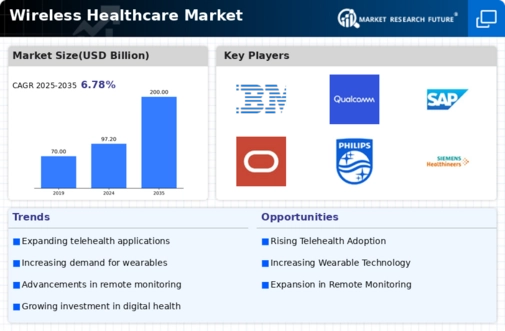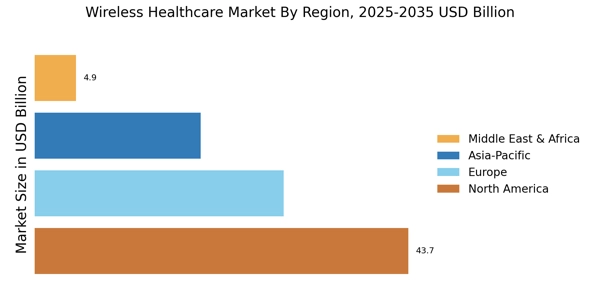The Wireless Healthcare Market is an evolving sector characterized by the integration of technological advancements aimed at enhancing patient care and operational efficiencies.
The competitive landscape is marked by a multitude of players ranging from established technology firms to specialized healthcare providers and startups that are innovating in telehealth, remote monitoring, and mobile health applications.
The rapid adoption of wireless technologies in healthcare delivery is driven by the increasing demand for efficient healthcare systems, the growing prevalence of chronic diseases, and the need for better patient engagement and accessibility.
Companies within this market are focusing on research and development to introduce advanced solutions that improve quality care while reducing costs, thereby fostering a robust competitive environment where innovation is key to capturing market share.
Abbott Laboratories holds a formidable position in the Wireless Healthcare Market, leveraging its extensive portfolio of healthcare solutions and innovations. With a strong emphasis on diagnostics and health management tools, Abbott Laboratories has developed a range of wireless monitoring devices that provide real-time data collection and analysis to improve patient outcomes.
The strength of Abbott Laboratories lies in its commitment to research and development, allowing for continuous improvements in existing offerings and the development of new technologies.
Moreover, Abbott’s strategic partnerships and collaborations further enhance its market presence by expanding its reach and integrating wireless solutions within various healthcare frameworks, ensuring that patients and providers can experience seamless connectivity and more effective management of health conditions.
GE Healthcare is another significant player in the Wireless Healthcare Market, known for its dedication to advancing health through innovative technologies and solutions. The company has been at the forefront of developing integrated healthcare systems that utilize wireless technologies to facilitate data sharing and clinical decision support.
GE Healthcare harnesses the power of big data and analytics in its wireless solutions, enhancing diagnostic accuracy and optimizing patient flow in hospitals and outpatient settings. Recognized for its strong emphasis on innovation, GE Healthcare continually invests in research and technical advancements which strengthen its competitive edge in the market.
The ability to provide advanced imaging and monitoring solutions tailored for diverse medical environments underpins GE Healthcare’s strategy, garnering trust from healthcare providers and ensuring efficient patient care delivery throughout the industry.


















Leave a Comment